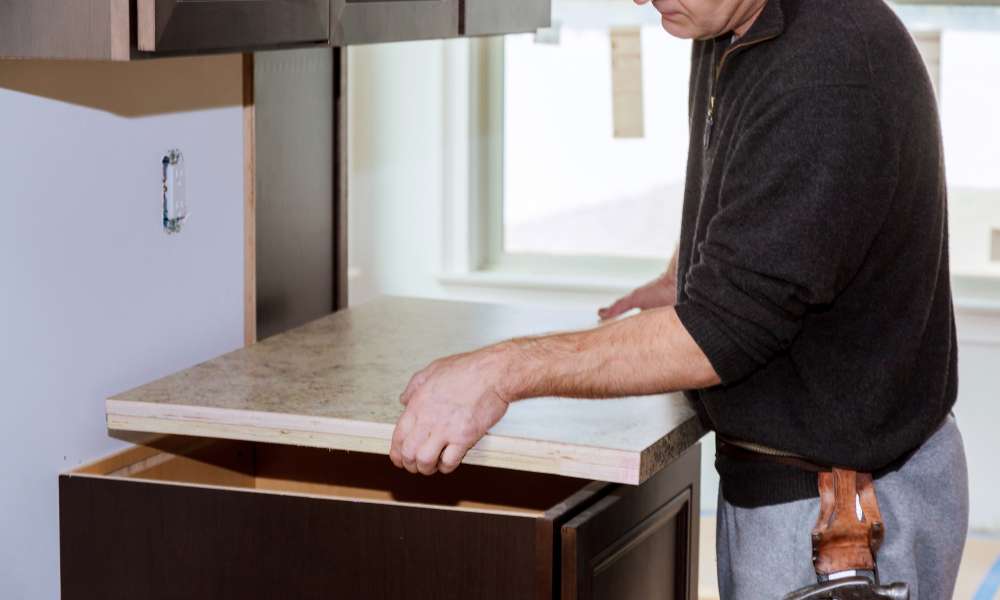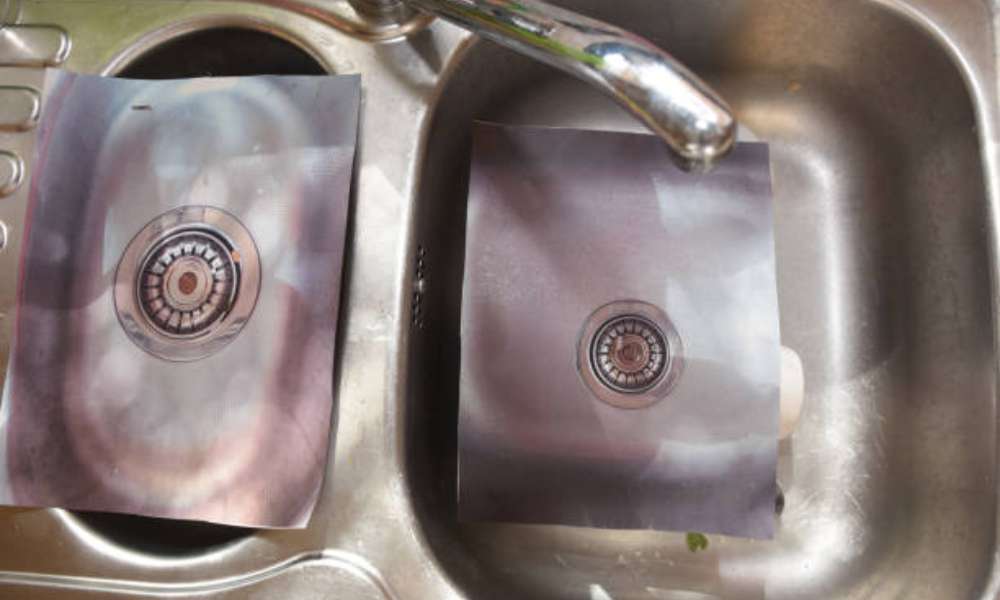Laminate countertops are A popular choice for homeowners due to their affordability, Versatility, And wide range Of design options. Made from layers Of plastic laminate bonded to A particleboard or MDF core, These countertops offer A durable And attractive surface suitable for kitchens, Bathrooms, And workspaces. However, Achieving A professional-looking installation requires precise cutting techniques. Properly cutting laminate countertops ensures clean edges, Accurate dimensions, And A smooth fit, Which are essential for both aesthetic appeal And functional integrity. Incorrect cutting can lead to chipping, Uneven edges, And misaligned sections, Compromising the overall look And longevity Of the countertop. Therefore, Understanding And applying the correct methods And tools for cutting laminate is crucial. By following detailed preparation steps And adhering to safety guidelines, DIY enthusiasts And professionals alike can ensure A seamless And successful installation, Enhancing the beauty And utility Of their spaces.
What tools do I need to cut a laminate countertop?
To effectively cut A laminate countertop, You’ll require A set Of essential tools tailored to the task. Firstly, A quality circular saw or jigsaw equipped with A fine-tooth blade specifically designed for laminate cutting is indispensable. These saws provide the precision And power needed to make clean, Accurate cuts through the laminate material. Additionally, Sturdy clamps are essential for securing the countertop firmly in place during cutting, Preventing movement, And ensuring straight, Consistent cuts. A measuring tape And straight edge are vital for precise measurement And marking Of cut lines. Safety gear, Including goggles to protect your eyes from debris And gloves for hand protection, Is paramount. Lastly, Consider having masking tape on hand to apply along the cut lines, Minimizing chipping And ensuring A clean finish. With these tools at your disposal, You’ll be well-equipped to tackle the task Of cutting A laminate countertop with confidence And precision.
How do I measure and mark the cut lines accurately?
Measuring And marking the cut lines accurately is crucial to ensure precise cuts And A professional finish when cutting A laminate countertop. Start by carefully measuring the dimensions Of the countertop area using A reliable measuring tape. Once you have the measurements, Use A pencil or marker to mark the cut lines directly onto the laminate surface. For straight cuts, Use A straight edge or ruler to guide your markings And ensure they are perfectly straight And parallel to the edge Of the countertop. Double-check your measurements And markings to avoid errors before proceeding with cutting. It’s also helpful to use masking tape along the cut lines to minimize chipping And protect the laminate surface during cutting. By taking the time to measure And mark the cut lines accurately, You’ll lay the groundwork for A successful cutting process And A beautifully finished countertop.
1. Tools And Materials Needed
To cut A laminate countertop accurately And safely, You’ll need A set Of essential tools And materials. Begin with A circular saw or jigsaw, Equipped with A fine-tooth blade designed for laminate, To ensure smooth And precise cuts. Clamps are crucial for securing the countertop during cutting, Preventing movement, And ensuring accuracy. A measuring tape And straight edge are indispensable for marking exact dimensions And guiding your cuts. Safety gear is equally important: Always wear safety goggles to protect your eyes from debris, And gloves to safeguard your hands during handling And cutting. Additional materials include masking tape, Which is applied along the cut line to minimize chipping, And A pencil or marker for clear, Visible markings. Ensuring you have these tools And materials on hand will not only facilitate A smoother cutting process but also enhance the overall quality And professionalism Of your countertop installation.
2. Preparation Steps
Proper preparation is key to successfully cutting A laminate countertop. Start by measuring the countertop area meticulously, Ensuring to account for any overhangs or cutouts for sinks And appliances. Use A reliable measuring tape And note the dimensions carefully. Next, mark the cut lines accurately on the laminate surface using A pencil or marker And A straight edge. This ensures precise guidance for your saw, Preventing errors. It’s helpful to double-check your measurements before making any marks. To prevent chipping And ensure a clean cut, Apply masking tape along the marked lines. Securing the countertop firmly is crucial; Use sturdy clamps to hold the countertop in place on A stable work surface. This stability prevents movement during cutting, Ensuring A straight, Smooth cut And enhancing safety. By following these preparation steps diligently, You set the foundation for A successful And professional-quality laminate countertop installation.
3. Safety Precautions
Ensuring safety while cutting A laminate countertop is paramount to prevent accidents And achieve A professional result. Always begin by wearing appropriate protective gear: Safety goggles to shield your eyes from flying debris, And durable gloves to protect your hands from sharp edges And splinters. Additionally, Wearing ear protection can guard against prolonged exposure to loud cutting noises. Handle tools with care And attention; Ensure that saw blades are sharp And in good condition to avoid binding And kickback. Before starting, familiarize yourself with the operation Of your tools, Particularly power saws, And follow the manufacturer’s guidelines. Maintain A clean work area to prevent tripping or accidental contact with tools. Be mindful Of common hazards such as loose clothing or jewelry that can get caught in machinery. By adhering to these safety precautions, You can minimize risks and ensure A smoother, More efficient countertop-cutting process.
4. Applying Masking Tape
Applying masking tape is A crucial step in cutting A laminate countertop to prevent chipping And ensure A clean edge. Start by selecting A high-quality masking tape that adheres well to the laminate surface. Carefully place the tape along the cut line, Ensuring it is straight And firmly pressed down to avoid gaps where chips can form. The tape acts as A protective barrier, Reducing the likelihood Of the laminate splintering or chipping as the saw blade passes through. Apply tape to both the top And bottom surfaces Of the countertop along the cut line. This double-sided approach provides additional support And further minimizes the risk Of damage. After securing the tape, Recheck your measurements And cut lines to ensure accuracy before proceeding with the cut. Proper application Of masking tape not only enhances the quality Of the cut but also contributes to A more professional And polished final appearance.
5. Handling Cutouts For Sinks And Appliances
Handling cutouts for sinks And appliances requires precision to ensure A perfect fit And A seamless appearance. Start by measuring the dimensions Of the sink or appliance accurately, Double-checking all measurements to avoid errors. For enhanced accuracy, Use templates provided by the sink or appliance manufacturer; These templates outline the exact shape And size Of the required cutout. Secure the template firmly to the countertop And trace around it to create A precise guide. When cutting, Use A jigsaw with A fine-tooth blade, Beginning with A drilled starter hole to ease the blade into the material. Follow the marked lines carefully, Maintaining A steady hand to ensure clean cuts. After cutting, Smooth the edges with A file or sandpaper to remove any rough spots or splinters. This meticulous approach ensures that your cutouts are neat, Precise, And ready for installation, Contributing to A professional-quality finish.
6. Maintaining Your Tools
Maintaining your tools is essential for ensuring their longevity And optimal performance, Especially when working with materials like laminate countertops. Start by regularly cleaning saw blades after each use to remove resin, Debris, And dust that can accumulate And affect cutting efficiency. Use A soft brush And mild cleaning solution to gently scrub the blades, And then dry them thoroughly to prevent rust. Proper storage is also crucial; Keep saw blades in A dry, Secure location, Ideally in blade cases or on A pegboard to prevent damage And maintain sharpness. Regular maintenance, Such as checking for signs Of wear And ensuring all moving parts are lubricated, Helps keep tools in peak condition. Additionally, Monitor the sharpness Of your blades. Dull blades can cause rough cuts And increase the risk Of accidents. Consistent maintenance not only extends the life Of your tools but also ensures precise, Safe cuts every time.
7. Environmental Considerations
Environmental considerations are important when cutting laminate countertops to minimize your impact on the planet. Start by properly disposing Of laminate scraps And offcuts; Instead Of sending them to A landfill, Consider recycling them if local facilities accept construction materials or repurposing them for other projects. Implementing eco-friendly cutting practices, Such as using electric tools efficiently to conserve energy, Contributes to sustainability. Additionally, Ensure your tools are well-maintained And sharp, Which not only improves cutting efficiency but also reduces energy consumption And material wastage. To further minimize waste, Measure, And plan cuts carefully to optimize the use Of each laminate sheet, Reducing the number Of offcuts. By adopting these practices, You not only protect the environment but also create A more efficient And cost-effective workspace. Through mindful disposal, Energy conservation, And waste reduction, You can make A positive environmental impact while working on your laminate countertop projects.
8. Cost Considerations
When planning to cut A laminate countertop, Cost considerations play A crucial role in managing your budget effectively. Start by budgeting for essential tools And materials, Including saws, Blades, Clamps, Measuring tapes, And safety gear. While these initial investments can be substantial, They are necessary for achieving professional-quality results. While DIY projects can save money on labor, They require time, Effort, And the risk Of potential mistakes that could incur additional costs. On the other hand, Professionals bring expertise And efficiency, Often providing A flawless finish with minimal material wastage. To save costs, Consider renting tools if you don’t plan to use them frequently, And look for sales or discounts on materials. Additionally, Accurate measurements And careful planning can minimize waste, Ensuring you get the most out Of your materials. By weighing these factors, You can make informed financial decisions that align with your project goals And budget.
9. Setting Up The Work Area
Setting up the work area is essential for A successful laminate countertop cutting project, Ensuring both safety And efficiency. Begin by ensuring adequate lighting And ventilation in the workspace. Good lighting is crucial for visibility, Allowing you to see cut lines clearly And work with precision. Proper ventilation helps disperse dust And fumes generated during cutting, Creating A healthier environment for you to work in. Next, Create A stable And clean workspace free from clutter And hazards. Clear any debris or obstacles that could impede movement or cause accidents. Ensure the work surface is level And sturdy, Providing A stable foundation for cutting. Additionally, Consider using drop cloths or protective coverings to prevent damage to floors And surfaces. By taking these steps to set up your work area thoughtfully, You create A safe, Comfortable, And conducive environment for tackling your laminate countertop project with confidence And precision.
10. Troubleshooting Common Issues
Troubleshooting common issues that may arise during the laminate countertop cutting process is essential for achieving A professional-quality finish. Uneven cuts can often occur due to blade deflection, Improper saw alignment Or insufficient support. To address this, Ensure your saw blade is sharp And properly aligned, And use clamps or guides to stabilize the countertop during cutting. If alignment problems persist, Double-check your measurements And cut lines to ensure accuracy. For future projects, Consider investing in A straight edge or cutting jig to maintain consistent alignment And prevent errors. Additionally, Practice proper cutting techniques, Such as maintaining A steady hand And smooth, Continuous movement, To minimize the risk Of mistakes. By troubleshooting common issues And implementing preventative measures, You can overcome challenges And achieve precise, Professional results in your laminate countertop-cutting endeavors. Removing rust stains from A countertop requires A gentle yet effective approach to avoid damaging the surface.
11. Finishing Touches
Completing the finishing touches is the final step in ensuring A flawless result for your laminate countertop cutting project. Start by meticulously cleaning the cut surface to remove any debris, Dust, Or adhesive residue. A clean surface not only enhances the appearance Of the countertop but also ensures A smooth fit for any fixtures or appliances. Next, Remove masking tape carefully from the edges, Peeling it away slowly to prevent any damage to the laminate surface. Inspect the cut edges thoroughly, Running your fingers along the surface to check for any rough spots or imperfections. If necessary, Use fine-grit sandpaper or file to gently smooth out any rough edges, Ensuring A professional-quality finish. Taking the time to complete these finishing touches ensures that your laminate countertop not only looks impeccable but also functions flawlessly, Providing years Of beauty And functionality in your kitchen or workspace.
Can I use a regular saw to cut a laminate countertop?
While using A regular saw to cut A laminate countertop is possible, It’s not always the most efficient or effective option. May not have the specialized features needed to cut laminate cleanly And accurately. Laminate countertops are composed Of multiple layers bonded together, Including A durable laminate surface And A substrate material like particleboard or plywood. Cutting through these layers requires A saw with A fine-tooth blade specifically designed for laminate cutting to prevent chipping And splintering. A circular saw or jigsaw equipped with A laminate-cutting blade is typically recommended for achieving precise cuts without damaging the laminate surface. These specialized saws offer the necessary power, Speed, And blade design to cut through laminate smoothly and cleanly, Ensuring professional-quality results. While it’s technically possible to use A regular saw for cutting laminate, Investing in the appropriate tools will ultimately save time And effort while producing superior outcomes.
How do I cut curves or angles in a laminate countertop?
Cutting curves or angles in A laminate countertop requires careful planning And precise execution to achieve professional-looking results. Start by outlining the desired curve on the countertop surface using A pencil or marker And A flexible curve ruler or template. Secure the countertop firmly in place using clamps to prevent movement during cutting. Then, Carefully guide the jigsaw along the marked line, Maintaining A steady hand And smooth, Continuous motion. For angled cuts, A circular saw with an adjustable base or A miter saw can be used. Use A protractor or angle finder tool to measure And mark the desired angle accurately on the countertop surface. Secure the countertop And adjust the saw blade to the appropriate angle before cutting. With patience And attention to detail, You can achieve clean, Precise curves And angles in your laminate countertop, Enhancing the overall aesthetic Of your space.
Conclusion
Achieving A professional-quality cut when working with laminate countertops requires attention to detail And adherence to key guidelines. Throughout this process, We’ve emphasized the importance Of proper preparation, Including accurate measuring, Careful marking, And securing the work area. Safety precautions, Such as wearing protective gear And handling tools with care, Are crucial for preventing accidents And ensuring A smooth cutting experience. By following these steps diligently, You can minimize errors And achieve precise, Clean cuts that enhance the overall appearance And functionality Of your countertop. With patience And practice, You can master the art Of cutting laminate countertops, Transforming your space with professional-quality results. So, Roll up your sleeves, Follow the guidelines outlined here, And embark on your laminate countertop cutting journey with confidence. Your efforts will be rewarded with A beautifully finished countertop that adds both style And value to your home or workspace.





